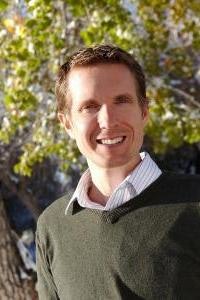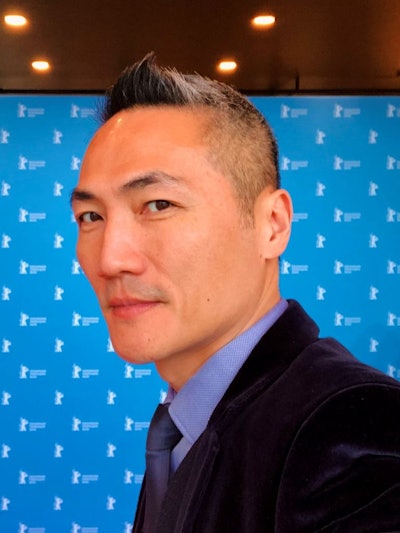When James Gray studied the disaggregated data of student performance in developmental math courses at the Community College of Aurora (CCA) in Aurora, Colorado, the achievement gap was clear. White students were outperforming their Black and Latinx counterparts.
“That was an overwhelming feeling to see that, thinking, how do we take this on and what do we do?” asked Gray, a member of the mathematics faculty at CCA and an affiliate with the Center for Urban Education at the University of Southern California’s Rossier School of Education.
 James Gray, mathematics faculty at Community College of Aurora and an affiliate with the Center for Urban Education at the University of Southern California’s Rossier School of Education
James Gray, mathematics faculty at Community College of Aurora and an affiliate with the Center for Urban Education at the University of Southern California’s Rossier School of Education
Gray shared these solutions for a more equitable education with other community college scholars at Achieving the Dream (ATD)’s second Operationalizing Equity, Social Justice, and Inclusion webinar. ATD is a nonprofit network organization of community colleges working to improve student success. Gray and others talked about the data needed for institutional self-introspection, syllabus and pedagogical adjustments, and the patience it takes to make incremental, but meaningful, change.
CCA reached out to the two school districts they primarily serve, one majority Black and Latinx and the other predominately white. They invited the high school math coaches to come and discuss with CCA’s faculty the ways in which they teach math.
“We found that most of our faculty teaching aligned with the white school district. Our faculty was dismissive of the way the Black and Latinx teachers taught,” said Gray. “For the students coming in, we were creating the narrative that they were underprepared. We found we just didn’t know how to teach them.”
The math department at CCA chose to buckle down and target the problem one student, one class, at a time. As they did so, the faculty learned new ways to engage with the students that produced “significant changes,” said Gray.
“Faculty felt they could reach students in ways they couldn’t before. They felt a sense of empowerment,” said Gray. “The whole world opens up in terms of what you want to do, how you can change your practices to help your students.”
On the east coast at the Borough of Manhattan Community College (BMCC), Dr. Vincent Tzu-Wen Cheng, professor and chair of speech, communication, and theater arts department, used disaggregated data to analyze the student outcomes of Fundamentals of Public Speaking, a required course for all students and one of the most failed courses at his institution. Cheng said he found the same racial achievement gaps that Gray found at CCA in math.
“It’s troubling, when I look at disaggregated data, students of color have even greater failure and withdrawal rates than white students, and we serve about 40% Hispanic and 30% Black students,” said Cheng. “We’re not creating an environment meant for those students to succeed.”
So, Cheng and his department developed a three-step plan for equity: equitize the syllabus so students of color and first-generation students can navigate it more easily; create a new, open educational resource textbook for students with chapters that reflect equitable practices and racial justice; and infuse culturally responsive and antiracist pedagogies into the way content is taught.
 Dr. Vincent Tzu-Wen Cheng, professor and chair of speech, communication, and theater arts department at the Borough of Manhattan Community College (BMCC).
Dr. Vincent Tzu-Wen Cheng, professor and chair of speech, communication, and theater arts department at the Borough of Manhattan Community College (BMCC).
The assignments have changed too. The first project is a self-introduction with four different prompts for students to consider: their name, their cultural identity, their values, and their goals.
“I want them to start from the first day to share and listen to [other] experiences,” said Cheng, who believes this kind of project can be applied outside a speech classroom. “You’ll see differences, but also commonalities. Acknowledge the cultural differences and commonalities that they do share, that they can relate to.”
At William Rainey Harper College in Palatine, Illinois, Dr. Stephanie Whalen is a professor of English, chair of the Academy for Teaching Excellence, and co-leader of cross-institutional collaborations that emphasize equity for marginalized students. The programs she runs are professional development for high school and university teachers wanting to learn how to equitize learning outcomes. One of these programs, Teaching for Equity, examined how students faired after English 101 and 102 course redesigns that provided more materials and used technology to integrate and emphasize certain parts of the class.
“We saw immediately in the data that students were having a more positive learning experience,” said Whalen.
Whalen hopes that the data she collects will be helpful in not only proving that equity-minded changes work, but also encourage everyone at institutions of higher learning to become actively engaged with equity, so professional development courses don’t simply “preach to the choir.”
“We want to increase the choir—increase the buy-in,” said Whalen. “Maybe one day, it becomes something institutions agree has value and build into our faculty development processes. But I think we’re a long way off, because we have to first prove through the data that we will make gains in student success.”
Liann Herder can be reached at [email protected].
















